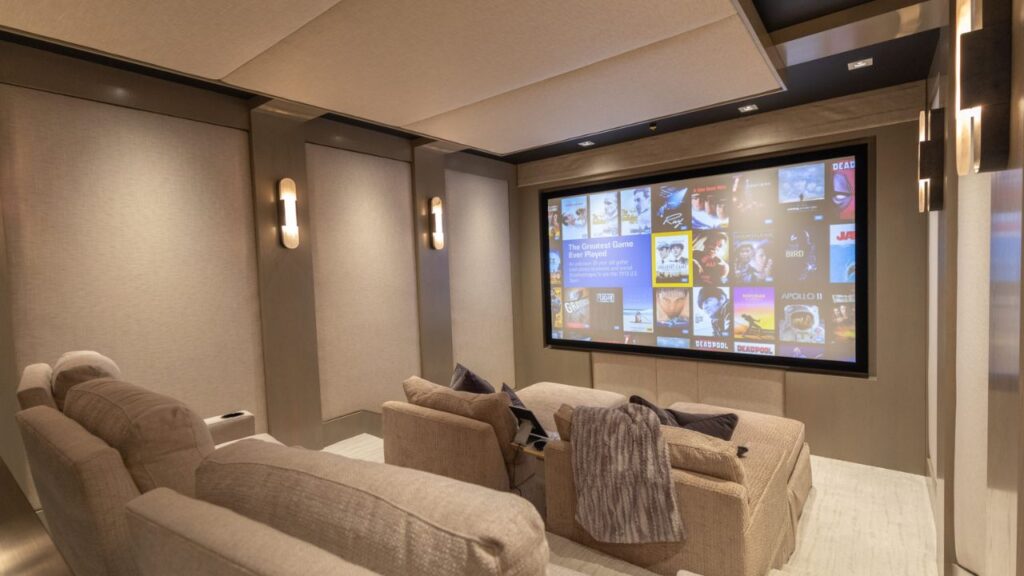Creating a captivating home entertainment system can transform your living space into a hub of enjoyment and relaxation. Whether you’re a movie enthusiast, a gaming aficionado, or a music lover, this guide will help you design and set up the perfect system to meet your entertainment needs.
STEP 1: DEFINE YOUR ENTERTAINMENT NEEDS
Before diving into purchases and setup, take a moment to outline what you want from your home entertainment system. Consider the following:
- Primary Activities: Are you mostly watching movies, playing video games, or listening to music?
- Number of Users: Will it be a family setup, or just for personal use?
- Room Layout: What is the size and shape of the room where you will be setting up your system?
STEP 2: CHOOSE YOUR DISPLAY
Your display is the centerpiece of your entertainment system. Options include:
- Television: Look for a high-definition (HD) or 4K Ultra HD TV. Consider factors like screen size, resolution, and smart features.
- Projector: If you prefer a larger viewing area, a projector can be a great alternative. Ensure you have adequate wall space and a suitable screen for projection.
Key Features to Consider:
- Resolution: Opt for 4K or higher for crisp visuals.
- Refresh Rate: A higher refresh rate (60Hz or more) provides smoother motion for fast-paced content.
- Smart Features: Built-in streaming services can eliminate the need for additional devices.
STEP 3: SELECT YOUR AUDIO SYSTEM
Audio quality significantly enhances the entertainment experience. You can choose from several options:
- Soundbar: A simple and sleek solution that provides better sound than TV speakers.
- Home Theater System: A more elaborate setup with multiple speakers (surround sound) for an immersive experience.
- Wireless Speakers: Consider these for flexibility in placement and easier connectivity.
Recommendations:
- Look for systems that support Dolby Atmos or DTS
for enhanced audio effects.
- Ensure compatibility with your TV and other devices.
STEP 4: PICK YOUR SOURCE Devices
You’ll need devices to play your media. Consider the following:
- Streaming Devices: Devices like Roku, Amazon Fire TV, or Google Chromecast allow access to various streaming services.
- Blu-ray/DVD Player: For physical media enthusiasts.
- Game Consoles: If gaming is a priority, consider PlayStation, Xbox, or Nintendo Switch.
STEP 5: CONNECTING YOUR SYSTEM
Once you have your components, it’s time to set them up. Follow these steps:
- Position Your TV/Projector: Center it on the wall or furniture, ensuring optimal viewing angles.
- Set Up Speakers:
- For a soundbar, place it below the TV or mount it on the wall.
- For surround sound, position speakers around the room (front, sides, and back) for the best audio experience.
- Connect Devices:
- Use HDMI cables for high-quality audio and video.
- For sound systems, ensure that each speaker is connected properly to the receiver.
STEP 6: CONFIGURE SETTINGS
After setting everything up, it’s essential to adjust your system settings:
- Picture Settings: Adjust brightness, contrast, and color settings based on your preferences and room lighting.
- Audio Calibration: Most sound systems have calibration settings to optimize sound quality according to your room’s acoustics.
- Device Configuration: Set up your streaming accounts and ensure all devices are recognized by your TV or receiver.
STEP 7: ORGANIZE CABLES
A tidy setup enhances both aesthetics and functionality:
- Cable Management: Use cable ties, clips, or raceways to keep cables organized and out of sight.
- Power Management: Consider a power strip with surge protection for all your devices.
STEP 8: ADD PERSONAL TOUCHES
Now that your system is set up, personalize your entertainment space:
- Lighting: Consider adding dimmable LED lights or smart bulbs to create the right ambiance.
- Comfort: Invest in comfortable seating, such as recliners or a cozy sofa, to enhance your viewing experience.
- Decor: Add artwork or themed decorations that reflect your interests and style.
